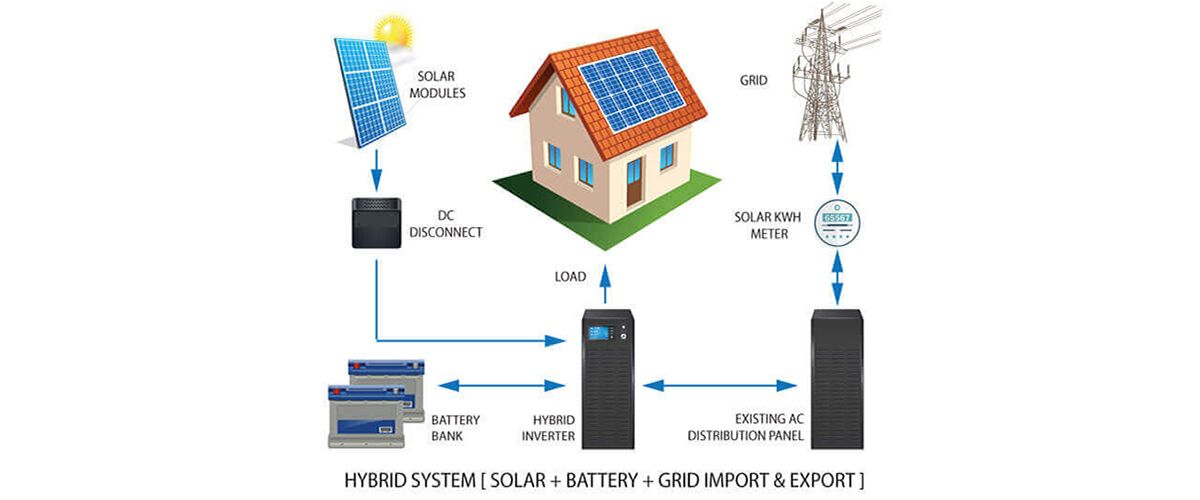

A grid-tied solar power system with battery storage is still tied into the traditional utility power grid and adds battery backup to the system. The addition of a battery backup enables the system to balance production and demand and protects against power outages.
Solar electric system production depends on the available sunlight. When sunlight is abundant, production can exceed demand. When production exceeds demand, excess power can charge the batteries, which store the electricity. When the system produces less electricity than the home demands, the batteries can make up the shortfall.
Since this system is also connected to the utility power grid, it enables the homeowners to draw from the grid during periods of excess demand and sell power to the grid when there is excess production.
While grid-tied systems offer more flexibility, they are not without disadvantages. Charging and discharging batteries reduces the system’s overall efficiency, and these systems are more complex to design and install, making the installation more expensive.

With the growth of solar + batteries, hybrid inverters are becoming increasingly important. The primary benefit of a hybrid inverter is that they provide for continuous operation of critical loads regardless of the presence or condition of the utility power grid.
UL1741 requires all grid-tied solar arrays to stop generating power in the event of a grid outage. This de-powering is known as anti-islanding and is for the safety of lineman working on the power lines. Therefore, all grid-tied inverters will not generate power in the event of a grid outage, so a homeowner will experience an outage even if solar energy is being produced.
In the last several years, hybrid inverters were created and paired with a battery system to help remedy this problem. Hybrid inverters with battery backup will allow for the powering of critical loads in the event of a grid outage. Still, they will do so to not feed energy back into the power grid during the outage. Therefore, all energy created by the solar array is used by the home’s electrical grid or stored in the battery system to not feed back onto the grid.
On sunny days when the batteries are fully charged, the hybrid inverter can also export excess power to the grid allowing homes to participate in net metering and receive a credit for the excess energy. In all instances, the hybrid inverter manages energy between the array and the grid while keeping the batteries fully charged automatically. In addition, hybrid inverters come with a built-in Auto-Transfer Switch allowing for a seamless transition between grid, battery, and solar.
An existing or new gas generator can also be connected to a hybrid inverter that allows an alternative backup supply if batteries get low or more power is needed than the batteries can sufficiently provide. Incorporating both a battery system as the primary backup and a generator as a secondary backup allows for minimal fuel storage on-site as well as fuel-stretching ensuring the home has power for any long-term or extended outage.
Reasons for installing a grid-tied solar power system with battery storage:
• Critical Load Backup Power
• Generator Fuel-Stretching and Minimal Fuel Storage
• States without net-metering
• Utilities using “Time of Use” Rate Structure
